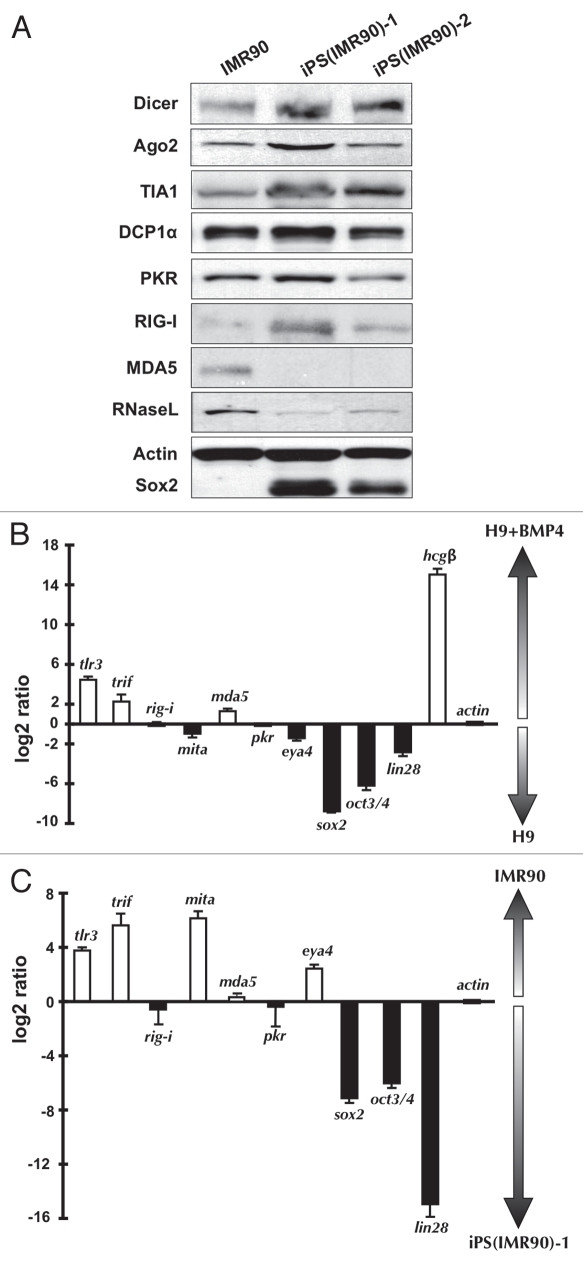Figure 5.
Factors involved in cytoplasmic responses to long dsRNAs in iPS cells and following differentiation of hESCs to trophoblasts. (A) Whole cell extracts were collected from IMR90 cells and iPS cells grown under feeder-free conditions and equal amounts of total proteins were subjected to SDS-PAGE and analyzed by western blotting with the indicated antibodies. Actin was used as a loading control and Sox2 was used as a marker for pluripotent cells. (B) Real-time RT-PCR was used to compare the relative levels of the mRNAs for the indicated factors between H9 cells and H9 cells that had been treated with BMP4 to promote differentiation to trophoblasts. Note that the bars represent the relative ratios of mRNA concentrations between the two cell populations (normalized to actin expression), not the absolute levels of transcripts. White bars, transcripts preferentially expressed in trophoblasts. Black bars, transcripts preferentially expressed in H9 cells. sox2, oct3/4 and lin28, pluripotency markers. hcgβ, trophoblast marker. (C) Real-time RT-PCR was used to compare the relative levels of the mRNAs for the indicated factors between IMR90 cells and iPS cells derived from IMR90 cells. Bars are as in (B). Another iPS cell line, iPS(IMR90)-2 showed essentially identical results (data not shown.)

